


THE NAPOLEONIC WARS 1803 -
THE BATTLE OF CORUNNA 1809
xxxxxA significant engagement of the Peninsular War was the Battle of Corunna, in which the British commander General Sir John Moore was killed. Fought in January 1809, it followed a hazardous 250 mile retreat from Salamanca in central Spain. After repulsing a series of attacks en route, the British army eventually held the French back at the port of Corunna on the north-
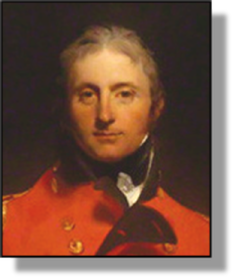 xxxxxOne of the significant engagements of the Peninsular War was the Battle of La Corunna, fought in January 1809 when the commander in chief was General Sir John Moore (illustrated) -
xxxxxOne of the significant engagements of the Peninsular War was the Battle of La Corunna, fought in January 1809 when the commander in chief was General Sir John Moore (illustrated) -
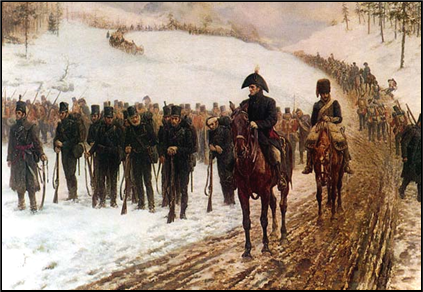 xxxxxHaving beaten off the French in a series of rearguard actions -
xxxxxHaving beaten off the French in a series of rearguard actions -
xxxxx“The Retreat to Corunna”, as it came to be called, was seen by some as a military disaster, and there was much criticism of Moore’s tactics. Overall losses amounted to 4,000 and the British army had come close to total defeat. On the other hand, many argued, including Wellesley, that the action as a whole had delayed the French conquest of Spain at the very time when the Spanish themselves were unable to offer any worthwhile resistance. Whatever the verdict of history concerning this campaign, the army arrived home in a pitiful condition, and had to be reformed and re-
xxxxxAxpoignant reminder of the battle itself was provided in 1817 when the Irish poet Charles Wolfe (1791-
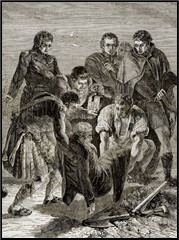 Not a drum was heard, not a funeral note,
Not a drum was heard, not a funeral note,
As his corse to the rampart we hurried;
Not a soldier discharged his farewell shot
O’er the grave where our hero we buried.
We buried him darkly at dead of night,
The sods with our bayonets turning,
By the struggling moonbeam’s misty light
And the lanthorn dimly burning.
Slowly and sadly we laid him down;
From the field of his fame fresh and gory;
We carved not a line, and we raised not a stone,
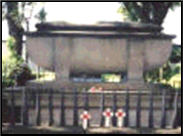 But we left him alone with his glory.
But we left him alone with his glory.
xxxxxIncidentally, today the granite tomb of Sir John Moore is situated in the Jardin de San Carlos overlooking the harbour from where the remnants of his army made their escape. ……
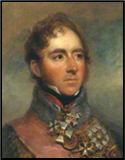 xxxxx…… Playing an important part in the retreat to Corunna, and the subsequent defence of the port, were the cavalry units commanded by General Lord Paget (the Marquis of Anglesey) (1768-
xxxxx…… Playing an important part in the retreat to Corunna, and the subsequent defence of the port, were the cavalry units commanded by General Lord Paget (the Marquis of Anglesey) (1768-
Acknowledgements
Moore: detail, by the English portrait painter Sir Thomas Lawrence (1769-
Including:
Sir John Moore

G3c-


